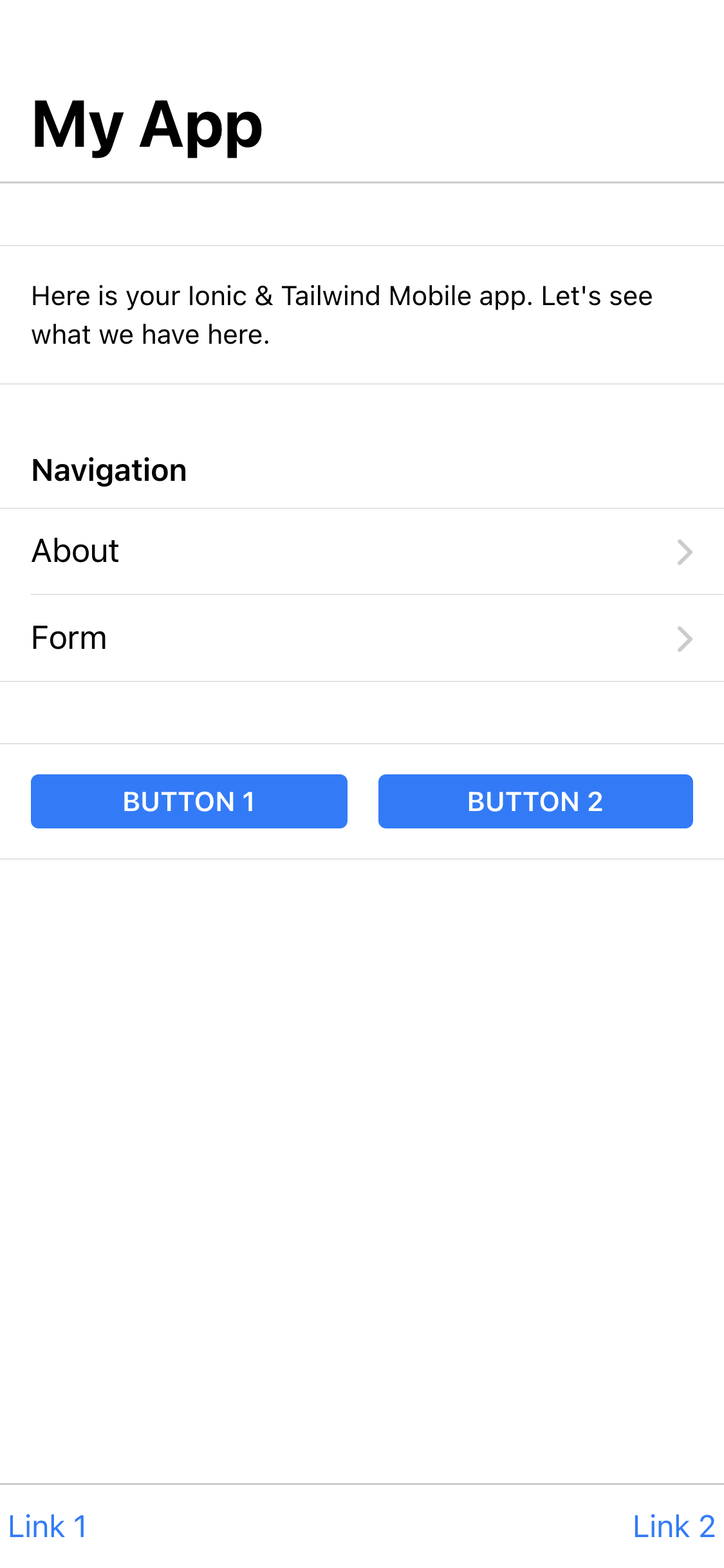- KonstaProvider
- App
- Action Sheet
- Badge
- Block
- Breadcrumbs
- Button
- Contacts List
- Card
- Checkbox
- Chip
- Data Table
- Dialog
- Floating Action Button
- Icon
- Link
- List
- List Button
- List Input
- List Item
- Menu List
- Messagebar
- Messages
- Navbar
- Notification
- Page
- Panel / Side Panels
- Popover
- Popup
- Preloader
- Progressbar
- Radio
- Range Slider
- Searchbar
- Segmented Control
- Sheet Modal
- Stepper
- Tabbar
- Toast
- Toggle
- Toolbar
- Toolbar Pane
Konsta UI & Ionic
Let's see how to use Konsta UI React components with Ionic React.
Contents
- Create Ionic Project
- Install Tailwind CSS
- Install Konsta UI
- Tailwind CSS Styles
- KonstaProvider
- Usage
- Example Page
Create Ionic Project
First, create an Ionic React project.
Install Tailwind CSS
If Ionic React project was generated with Ionic CLI, it actually creates a Create React App project.
So, to install Tailwind CSS, we can follow official Tailwind CSS with Create React App Guide
Install Konsta UI
Now, we can install Konsta UI:
npm i konsta
Tailwind CSS Styles
Create a src/App.css file with the following content to include Tailwind CSS:
@import 'tailwindcss';
/* import Konsta UI theme */
@import 'konsta/react/theme.css';
KonstaProvider
Now we need to setup KonstaProvider so we can set some global parameters (like theme).
We need to wrap main Ionic's IonApp component with KonstaProvider in the src/App.tsx:
import React from 'react';
import { KonstaProvider } from 'konsta/react';
import { IonApp /* ... */ } from '@ionic/react';
const App: React.FC = () => (
// Wrap IonApp with KonstaProvider with theme="parent"
<KonstaProvider theme="parent">
<IonApp>
<IonReactRouter>
<IonRouterOutlet>
<Route exact path="/home">
<Home />
</Route>
<Route exact path="/">
<Redirect to="/home" />
</Route>
</IonRouterOutlet>
</IonReactRouter>
</IonApp>
</KonstaProvider>
);
Usage
To keep Ionic router work correctly we need to use Router-related components from Ionic: IonApp, IonReactRouter, IonPage, IonHeader, IonFooter, IonToolbar.
The rest of components (if there is a Konsta UI alternative) can be taken from Konsta UI (konsta/react)
Example Page
Now when everything is set up, we can use Konsta UI React components in Ionic page components.
For example, let's open src/pages/Home.tsx and change it to the following:
import {
IonContent,
IonHeader,
IonFooter,
IonPage,
IonTitle,
IonToolbar,
} from '@ionic/react';
import { Block, Button, List, ListItem, BlockTitle, Link } from 'konsta/react';
const Home: React.FC = () => {
return (
// Use IonPage, IonHeader, IonFooter & IonToolbar from Ionic
<IonPage>
<IonHeader>
<IonToolbar>
<IonTitle>My App</IonTitle>
</IonToolbar>
</IonHeader>
<IonFooter>
<IonToolbar>
<Link slot="start" toolbar>
Link 1
</Link>
<Link slot="end" toolbar>
Link 2
</Link>
</IonToolbar>
</IonFooter>
<IonContent fullscreen>
<IonHeader collapse="condense">
<IonToolbar>
<IonTitle size="large">My App</IonTitle>
</IonToolbar>
</IonHeader>
{/* In page content we can use Konsta UI components */}
<Block strong>
<p>
Here is your Ionic & Konsta UI app. Let's see what we have here.
</p>
</Block>
<BlockTitle>Navigation</BlockTitle>
<List>
<ListItem href="/about/" title="About" />
<ListItem href="/form/" title="Form" />
</List>
<Block strong className="flex space-x-4">
<Button>Button 1</Button>
<Button>Button 2</Button>
</Block>
</IonContent>
</IonPage>
);
};
export default Home;
As a result we should see the following page:






